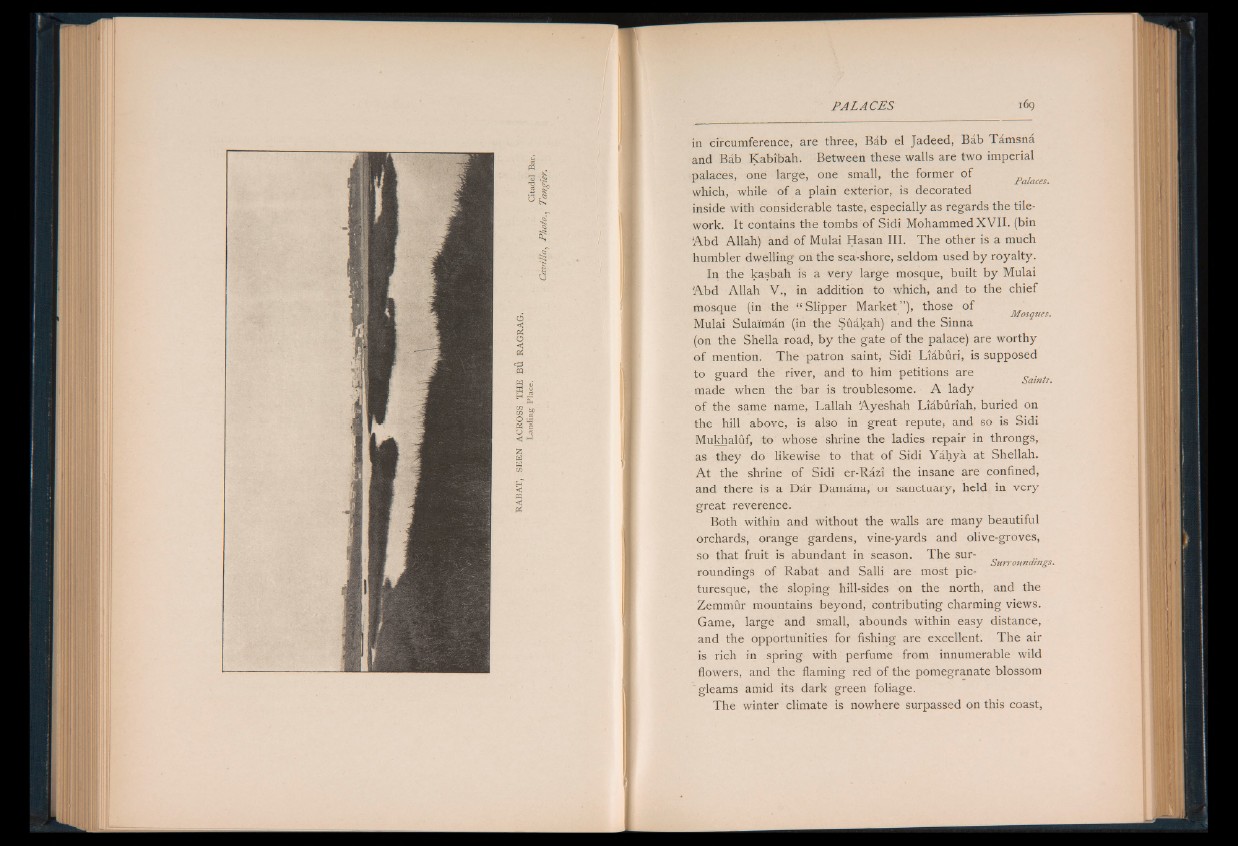
in circumference, are three, Bab el Jadeed, Bab Tamsna
and Bab Kabibah. Between these walls are two imperial
palaces, one large, one small, the former of .
which, while of a plain exterior, is decorated
inside with considerable taste, especially as regards the tile-
work. It contains the tombs of Sidi Mohammed XVII. (bin
Abd Allah) and of Mulai Hasan III. The other is a much
humbler dwelling on the sea-shore, seldom used by royalty.
In the kasbah is a very large mosque, built by Mulai
A b d Allah V., in addition to which, and to the chief
mosque (in the “ Slipper Market ” ), those of Mosques
Mulai Sulai'man (in the Suakah) and the Sinna
(on the Shelia road, by the gate of the palace) are worthy
o f mention. The patron saint, Sidi Liaburi, is supposed
to guard the river, and to him petitions are
made when the bar is troublesome. A lady
o f the same name, Lallah Ayeshah Liaburiah, buried on
the hill above, is also in great repute, and so is Sidi
Mukhaluf, to whose shrine the ladies repair in throngs,
as they do likewise to that of Sidi Yahya at Shellah.
A t the shrine of Sidi er-Razi the insane are confined,
and there is a Dar Damana, or sanctuary, held in very
great reverence.
Both within and without the walls are many beautiful
orchards, orange gardens, vine-yards and olive-groves,
so that fruit is abundant in season. The sur- Surroundings.
roundings of Rabat and Salli are most picturesque,
the sloping hill-sides on the north, and the
Zemmur mountains beyond, contributing charming views.
Game, large and small, abounds within easy distance,
and the opportunities for fishing are excellent. The air
is rich in spring with perfume from innumerable wild
flowers, and the flaming red of the pomegranate blossom
gleams amid its dark green foliage.
The winter climate is nowhere surpassed on this coast,